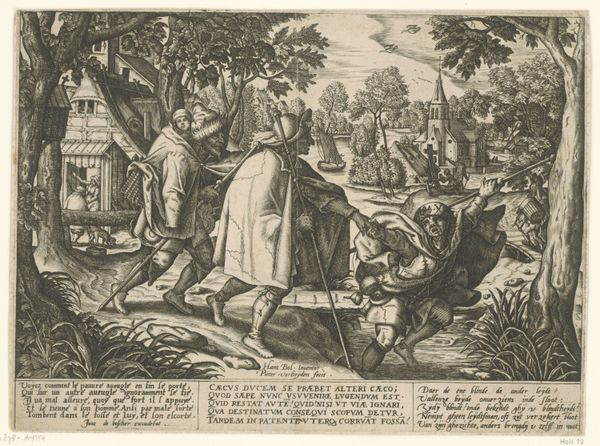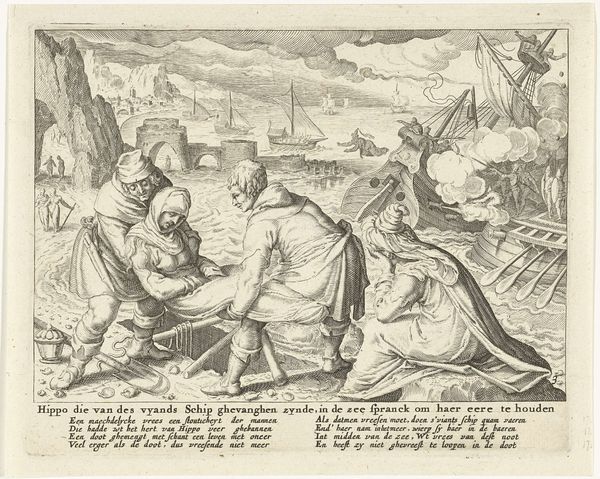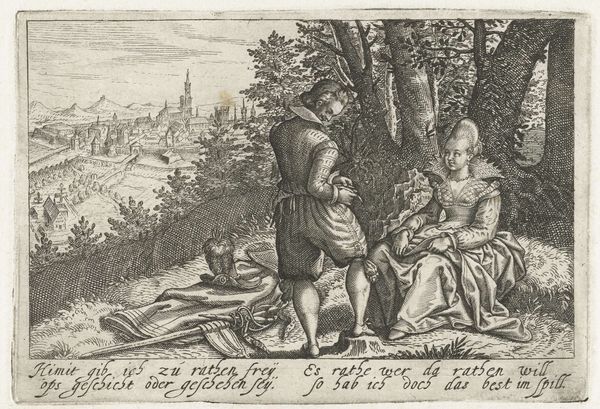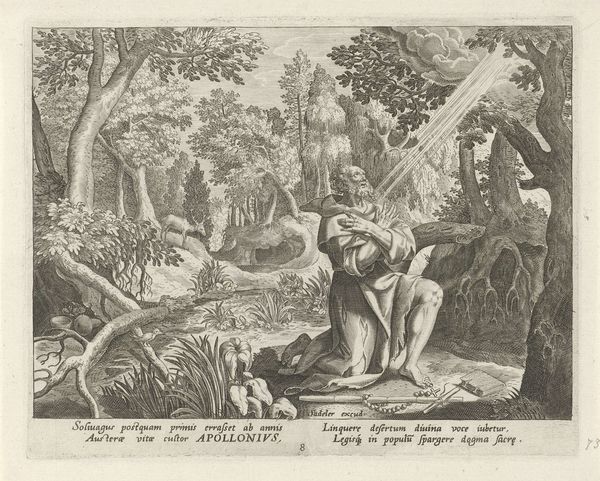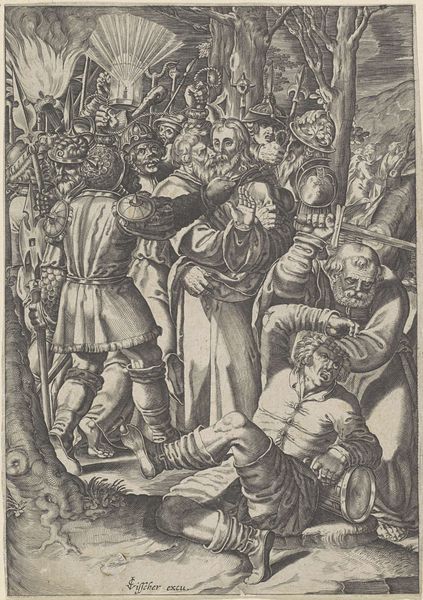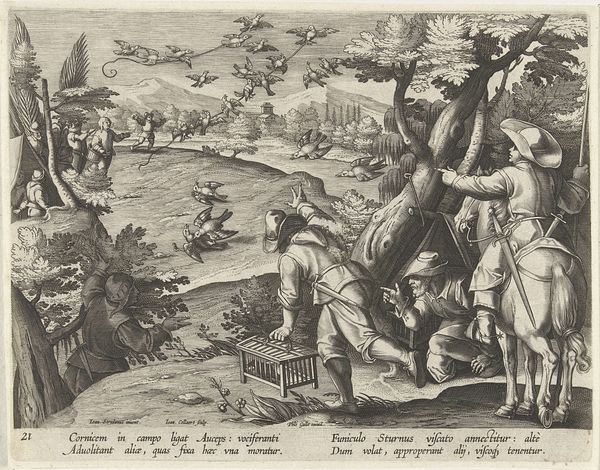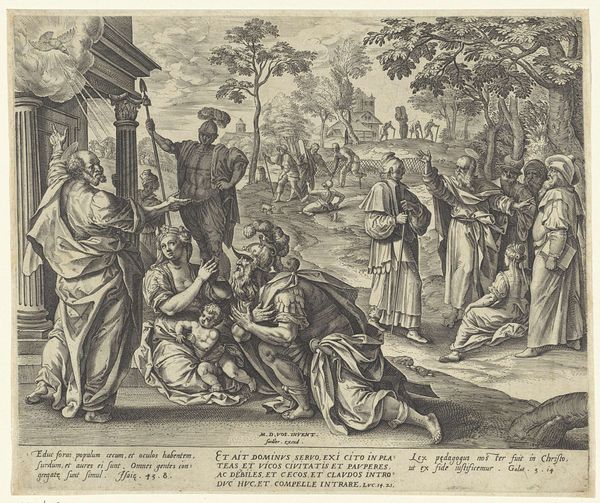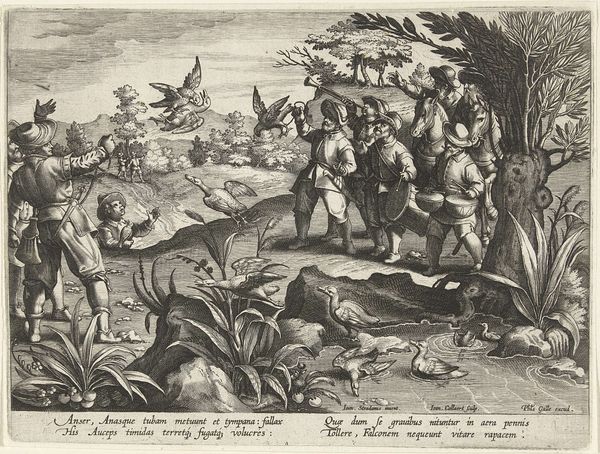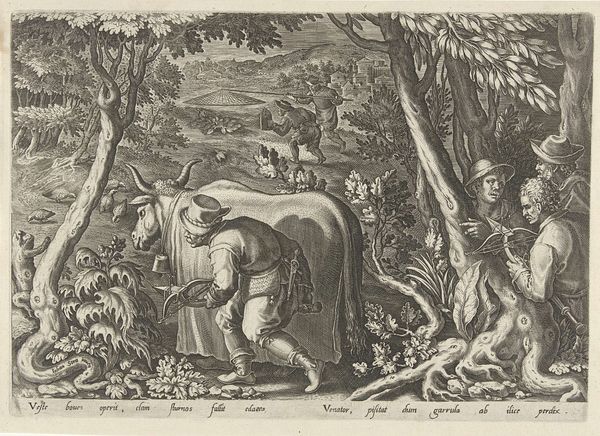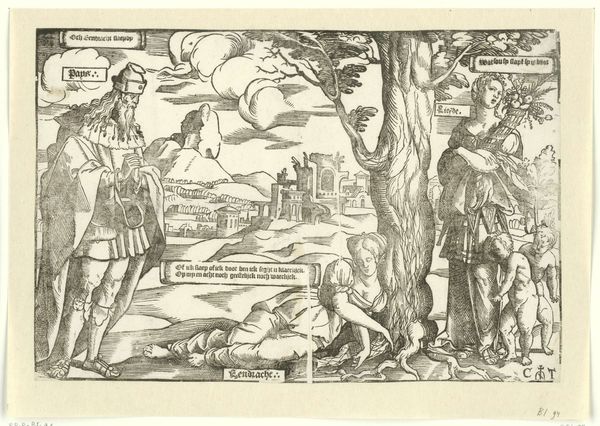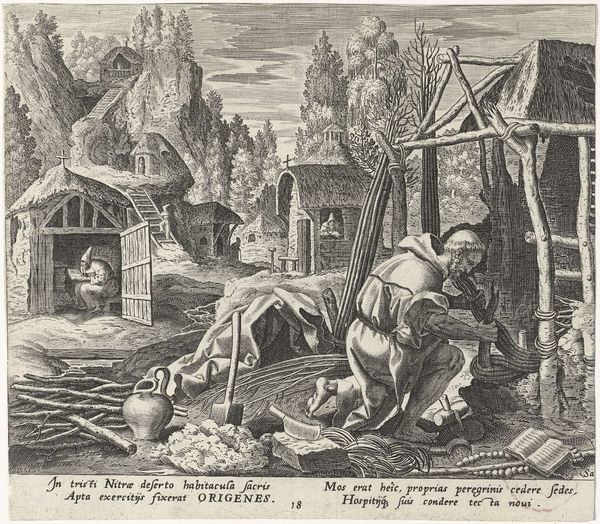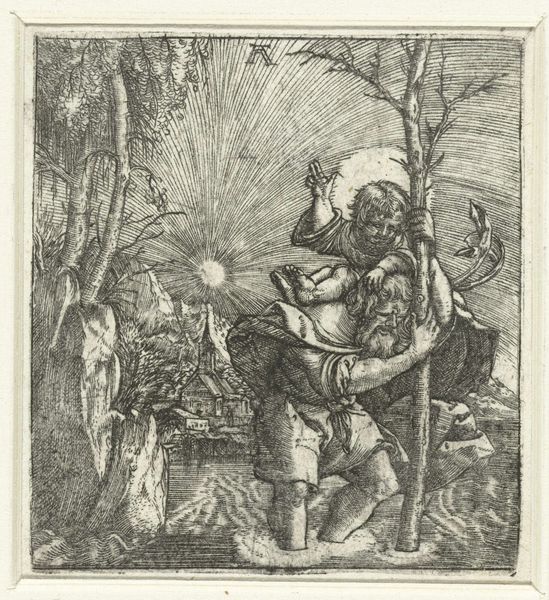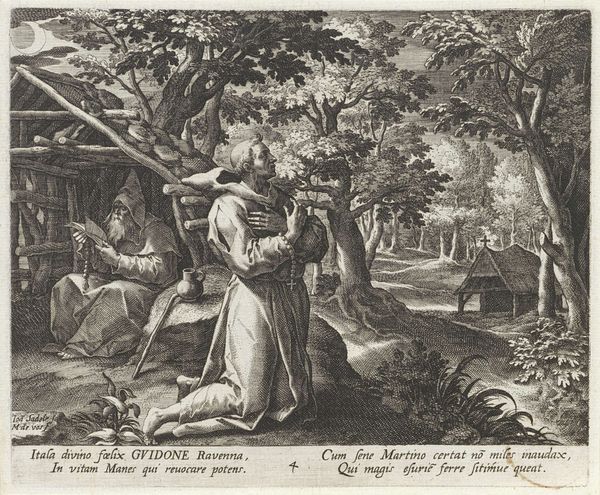
print, etching
#
narrative-art
# print
#
etching
#
landscape
#
genre-painting
Dimensions: height 222 mm, width 255 mm
Copyright: Rijks Museum: Open Domain
Editor: Here we have "The Parable of the Blind Leading the Blind," an etching from sometime between 1540 and 1570 by Pieter van der Heyden, currently held at the Rijksmuseum. It depicts a rather bleak scene of two blind men stumbling into what looks like a ditch. The texture is incredible with cross-hatching used to show light and shadow. What do you see in this piece, considering its place in history? Curator: It's tempting to see this as a purely aesthetic work, but the visual composition speaks to very real anxieties about social order and the dangers of ignorance in 16th-century society. The print circulated widely and served as visual propaganda reflecting the tumultuous religious and political climate of the time. Who exactly is the 'blind' man in this piece? Is it simply the literally blind men that you see? Editor: Good point. The text inscribed beneath the image suggests a more metaphorical reading. So the print, while seemingly a genre scene, uses blindness as a symbol of wider societal failings. Curator: Exactly. Consider the Reformation raging during this period. Traditional authorities are being questioned. If societal leaders—political, religious, or even intellectual—are morally or intellectually "blind," what are the implications for the common person trying to navigate this confusing world? This print would act as visual criticism of said leaders. It's crucial to understand who paid for and circulated images like this, to unpack their ideological function in public discourse. The image becomes a potent tool in the hands of those trying to reshape society. Editor: That definitely reframes my initial reading. I was so focused on the technique. Now I understand it's a visual commentary on the anxieties of a society in upheaval. Curator: And anxieties that are cleverly framed as a popular and accessible warning to contemporary audiences through prints that they can engage with, spreading these ideas across societal stratifications. It's fascinating to see how art functioned within specific sociopolitical circumstances. Editor: I’ll definitely look at art differently now, considering the context and its potential political voice!
Comments
No comments
Be the first to comment and join the conversation on the ultimate creative platform.
